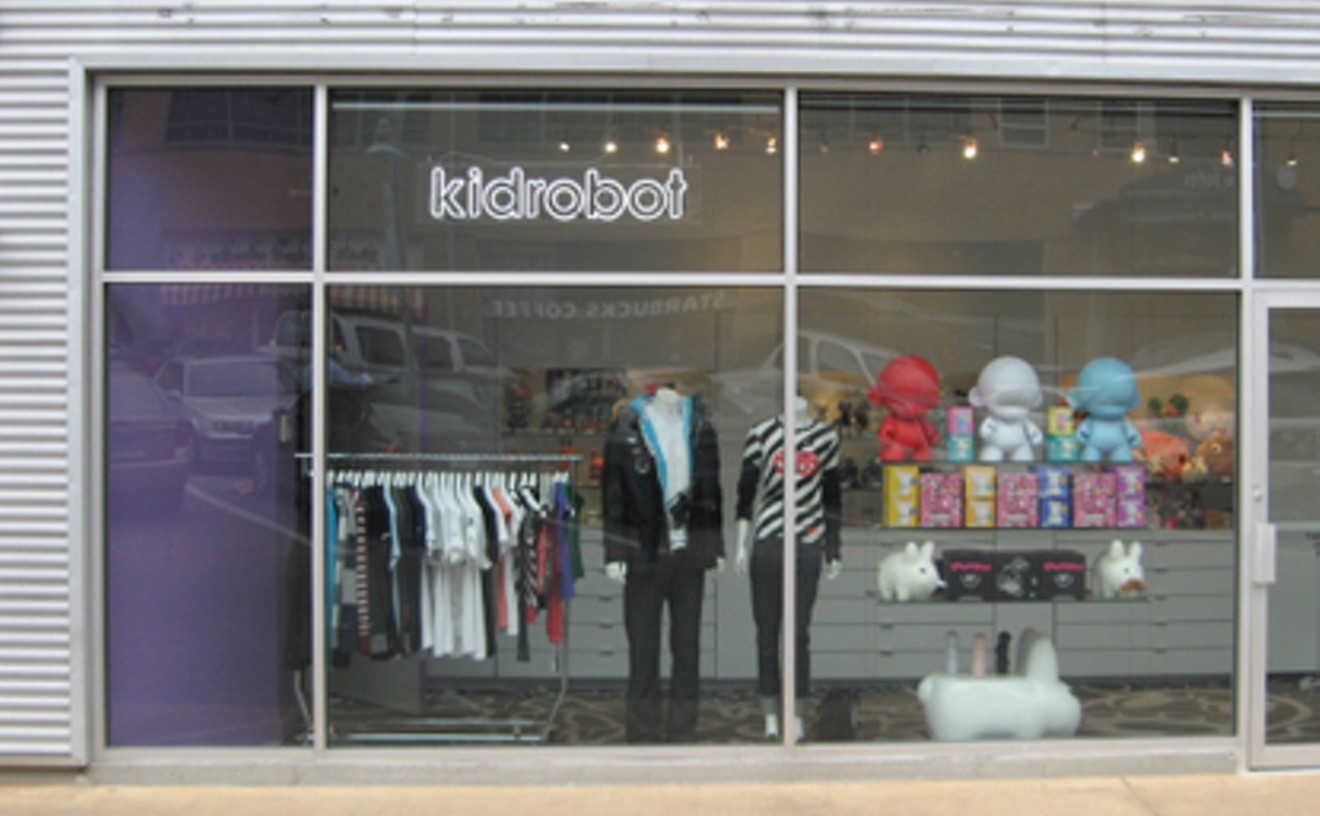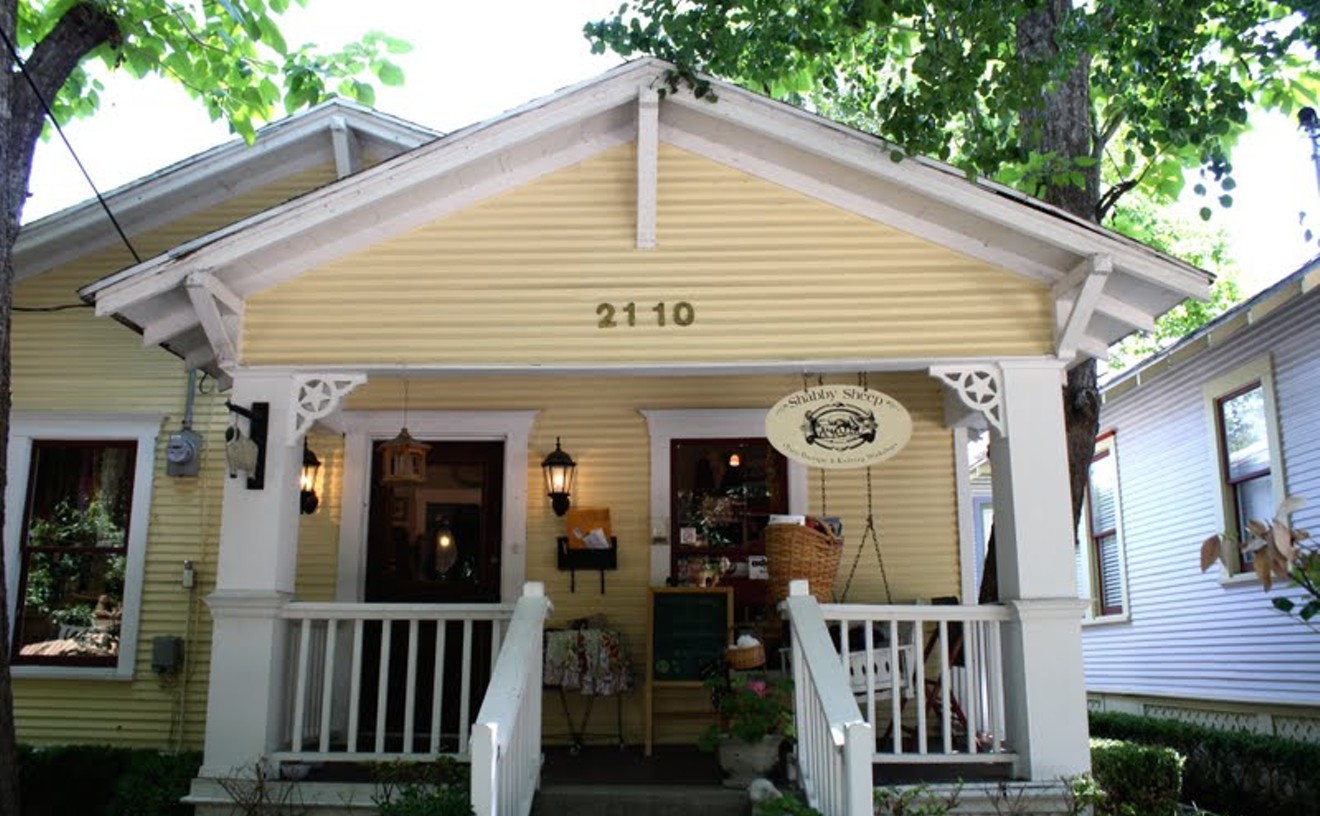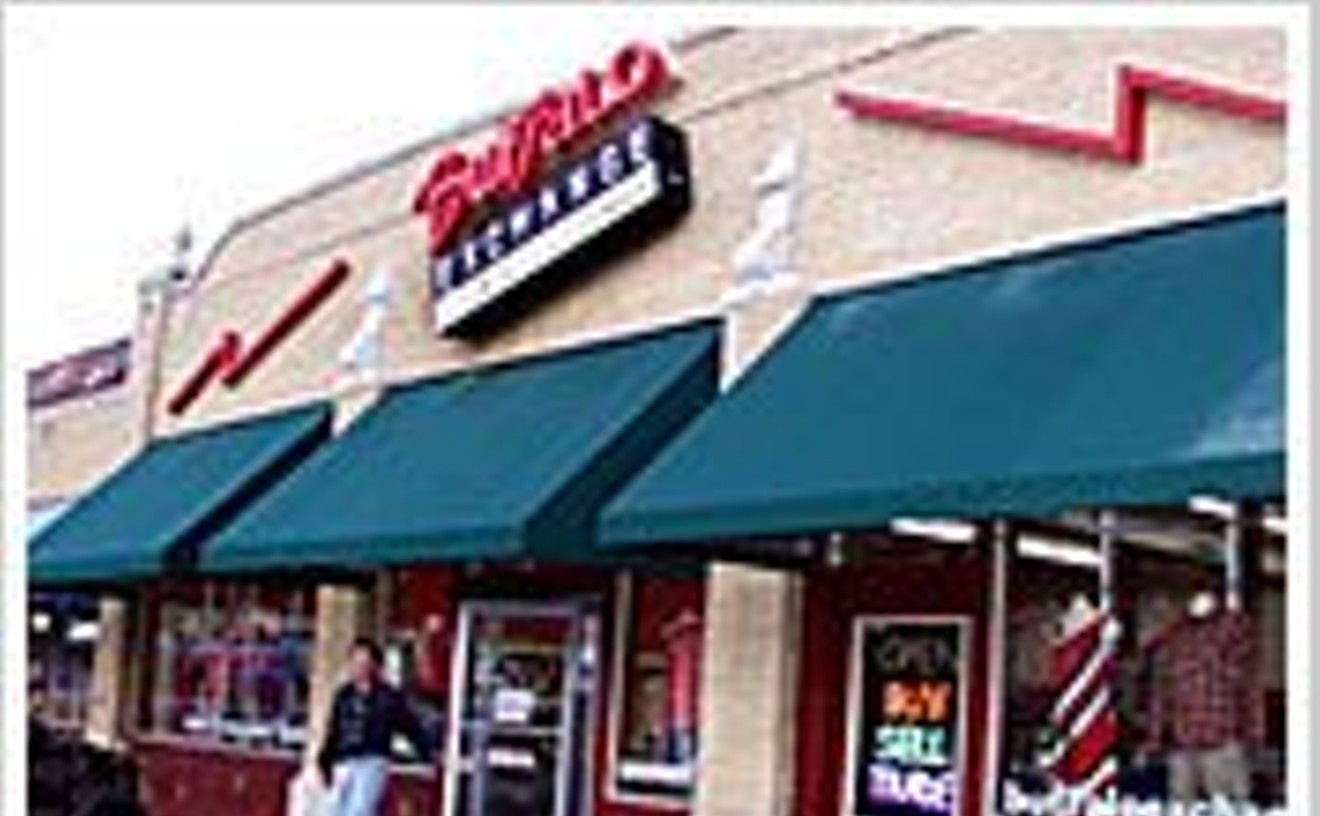It's hard to believe that a simple concept like the Buffalo Exchange, where customers can buy, sell and trade clothing and accessories, needed to be imported from someplace else, but the city's best thrift store was born from Kerstin and Spencer Block, who opened their first store 35 years ago in Tucson, Arizona. Now with 35 stores and two franchises in 13 states, business is booming, and it's easy to see why. Focusing on selling only trendy and vintage fashions, Buffalo Exchange offers patrons a wide array of T-shirts, dresses, shoes, belts, purses and jewelry to suit every size and budget. The store is meticulously organized, and its upfront policy on accepting items is appreciated. If you want to take the money and run, you'll get 35 percent of what they'll price it at, and if you want to swap it for something else, they'll hand over 50 percent of the price in store credit.
Best Thrift Store
Buffalo Exchange
Best Toy Store
Kidrobot

Kidrobot—it's just a toy store, right? And a pretty lame one at that, considering that the store's flagship product, the Munny, is nothing but a blank, 7-inch-tall, white vinyl doll that will cost you $29.95 to customize on your own. Uh, not so much. If that's all Kidrobot was, there wouldn't have been a line 400 hipsters long waiting outside the store's door on its grand opening. Just the fifth Kidrobot store in the world—New York, San Francisco, Los Angeles and Miami boast its only other homes—the Dallas location is no bigger than a cubicle deep and eight cubicles wide, in office worker terms, or big enough to fit only 20 customers at a time, meaning some customers waited almost four hours just to get in the place. Yep, Kidrobot's just a toy store, not a sign that Dallas might be getting a little bit cooler.
- 5307 E. Mockingbird Lane, Dallas, 75206 Map
- 214-887-6226
Best Women's Boot Camp
HerStrength
Having trained more than 300 women in his women-only boot camp fitness groups over the past few years, Dallas trainer and entrepreneur Scott Colby knows what works and what works quickly to get ladies in shape. Nicknamed "The Abs Expert," Colby has a no-nonsense but still decidedly laid-back approach. He lays out each day's one-hour routine (using kettlebells, medicine balls and sometimes sledgehammers) and puts the women through their paces with no yelling, no grunting and no put-downs. He's a gentleman, keeping a respectful attitude around all the sweaty Bettys. With a hurting economy hurting his biz, Colby recently instituted a "first two weeks free" program for all new clients, and he offers a free workout for men and women every Saturday morning at the SMU track bleachers. Nice to find a trainer whose strongest muscle is his heart.
- 3625 N. Hall St., Dallas, 75219 Map
- 214-505-8504
Best Women's Clothing Store
Archive Vintage
We always admired (sometimes in shocked amazement) the bold fashion choices of Carrie Bradshaw. She taught us (along with Sex and the City stylist Patricia Field) the subtle art of combining vintage and contemporary styles. The show has been off the air for five years, fashion has moved on and we've found a new Kerry to admire—Kerry Bonnell of Archive Vintage. Her charming store on Maple Avenue looks more like a high-end boutique than a typical vintage store: no overcrowded racks or musty, sweat-stained garments here, just lots of high-quality, immaculate-condition couture. While perusing the tidy racks, we gently stroked a Chanel suit, a Halston ultrasuede dress and an Alaia leather overcoat. But for those who can't drop four figures on a fabulous frock, Archive's newly opened Back Room has more traditional vintage fare: denim jackets, tooled leather belts and bags, and rock show T's. Either way you go—haute or not—Archive will remind you that decades-old clothing can be decidedly au courant.
- 2912 Maple Ave., Dallas, 75201 Map
- 214-999-8921
Best Wool
The Shabby Sheep

The first time we tried to find this place, we gave up. But on our second attempt, we were glad we had persevered. For knitters, crocheters and other fiber crafters, welcome to heaven. This darling cottage is stuffed full of charming displays (such as an old mail sorter and a china cabinet) stacked with sumptuous yarns. If you've never purchased yarn outside of a big-box craft store, boy, you are in for a treat. The Shabby Sheep stocks yarns you'll never find at the hobby chain, including alpaca, silk, mohair, linen, cashmere and, of course, wool. Our favorites included the kettle-dyed Manos del Uruguay line and the soft but sturdy Blue Sky Alpaca. With weights from wispy to dreadlocked, and accessories such as wooden knitting needles and gorgeous bags by Namaste, you may need to take up knitting full-time to use all the goodies you're bound to buy.
- 2112 Boll St., Dallas, 75204 Map
- 214-953-0331
- www.theshabbysheep.com

Web extra: Take a video tour of Henderson Avenue development with Marc and Roger Andres.
It seems so damn Dallas: I'm with the Andres brothers, Marc and Roger, and they've agreed to give me a brief tour of their holdings on Henderson Avenue—one of the more walkable neighborhoods in the city—and we are driving.
We have just finished a lengthy interview on the second-floor offices of Andres Properties, conveniently located at a midway point on the 1.1-mile narrow strip of tree-lined street that connects the 35 restaurant and retail properties they own, developed, lease and love. The street contains some of the trendiest scene-driven restaurants in Dallas—Park, The Porch, Soley! Sushi Axiom—and some of the busiest neighborhood bars—Old Monk, Capitol Pub. But it's late August. It's ridiculously hot. Getting out of the heat and into a car is as natural in Texas as gas. Like other sectors of the economy, commercial real estate in Dallas has taken a beating. Hillwood turned over the keys to its Victory Park development to German investors, occupancy rates at shopping malls are plummeting and restaurant closures fill the entries of food bloggers.
Yet the Andres brothers, who own about 80 percent of the retail and restaurant space on Henderson, say they rarely lose tenants, and they project that in 2009 the street should do $60 million in sales, up from $10 million just three years ago. "Last Saturday and Sunday, we had 14 calls on our voicemail of people wanting to get on Henderson Avenue," Marc said earlier. "A lot of people want to be in this area."
I pepper them with the same line of questioning: Why Henderson? Why now? Why them? They seem uncomfortable answering, getting all modest on me, and saying that none of this could have been possible without a confluence of contributors: restaurateur Tristan Simon for one, who took a risk in 2000 by opening Cuba Libre (not Andres property) on Henderson Avenue, which was still a transitional neighborhood. He followed with two nightclubs and four restaurants, including Fireside Pies (2004) and The Porch (2007) on property leased from the brothers. Blake Pogue of Phoenix Property Company was also a game-changer. In 1999, he began building apartments and condos in the surrounding neighborhood, offering restaurants and retail, both existing and prospective, some much-needed density so people could live where they played.
But isn't that integral to their success—the new urbanism concept of walkability? Singles and couples without children, attracted to housing close to downtown rather than the suburbs, coming home from work, strolling to dinner, drinking a beer on the patio of their favorite neighborhood bar, no cars—and no cares about getting a DWI.
The Andres brothers tell me that yes, walkability was exactly what they were going for, only they didn't know it when they started because the term hadn't been coined yet.
What they did know from the time they were young boys was Henderson Avenue. They drove up and down the street with their father, tagging along as he met with tenants of the income-producing property he owned. Until the 1970s, their father had run a family grocery business on the outskirts of downtown, which closed when the city condemned the property to build Woodall Rodgers Freeway. Then he plunged himself into the real estate business full-time, buying property housing mom-and-pop shops, 7-Elevens, gas stations—many along Lemmon and McKinney Avenues, Lower Greenville and Henderson.
In the mid-'80s, Marc and Roger joined their father's business. While many of their real estate friends focused on the new, developing "primary corners" of shopping centers and leasing to national credit tenants such as the Gap, what excited them, they say, was stripping their father's properties down to their 1920s selves and making them look new again.
"We wanted everything to remain organic. For the most part, everything would be brick and natural materials," Marc stresses. "We didn't want a Starbucks on Henderson, or a Brinker concept like Chili's, something you could see on any corner of the city. We wanted everything on Henderson to be one-of-a-kind."
From revenue generated by selling their holdings in the Bishop Arts District, they purchased more property on Henderson and by September 2006 had gained a critical mass of land that enabled them to control development on the street. "Everything we do is intentional," Marc says. "We strategically slot the tenants, and we don't do conflicting uses. You won't find two yogurt shops on the same block, or two Italian restaurants. If we don't have the right tenant, then the space will stay vacant until the right one comes along."
It seems to be working. On our little tour after we finally get out of the car, the Andres brothers aren't just recognized by their tenants, they're celebrated by them. Valet parkers go out of their way to make eye contact and wave. Operators at Sushi Axiom, Veritas (a wine bar) and Urbino (pizza and pasta) extend hearty handshakes.
"The Andres Brothers are on the street all the time—they are very involved participants," says Brooks Anderson, who owns Veritas with his brother Bradley. "When you see all the crowded patios on a Friday or Saturday night, the eclectic crowd, the energy, you know they have cobbled this thing together in the right way."
Though the density from the nearby apartments isn't where they want it yet and they suffered a setback when a neighborhood group beat back their efforts to transform a former Hispanic grocery store into a mixed-use development that included 250 apartments, there remains an undeniable momentum to Henderson Avenue that appears to defy economic slumps and bumps. There's also a feel to the street that it is authentic, almost soulful, a sentiment that the Andres brothers are not just helping build a sense of community, but a community outright.
"Ten years ago, if you saw a girl running down Henderson, someone was chasing her," Roger says. "Now she is jogging. Now every morning when we come to work, there are people walking their dogs, cyclists having coffee at the Pearl Cup and joggers. It's pretty unbelievable." Mark Donald
Billy Reid
3720 Canton St.
214-821-1010
Best Bookstore (Used)
Half Price Books
Various locations
Best Bookstore (New)
Borders Bookstore
Various locations
Best Shoe Store
DSW Shoe Warehouse
8335 Westchester Drive
214-696-2305
Best Bicycle Shop
Richardson Bike Mart
Various locations
Best Antique Jewelry Store
Village Goldsmith
Tucked away in the back of the Forestwood Antique Mall at the corner of Forest Lane and Inwood Road, there's a piece of antique jewelry you or your spouse surely can't live without. Whether it's something with a sapphire, ruby or emerald surrounded by platinum, gold or silver, Village Goldsmith has a unique piece to fit the bill. Does a breathtaking platinum ring from the early 1900s with a diamond flanked by smaller diamonds and French-cut sapphires interest you? Or how about a handmade gold necklace with amethysts and small pearls? A great selection of estate jewelry at fair prices with great customer service and onsite repair—now that's something both you and your significant other can appreciate.
- 5333 Forest Lane, Dallas, 75244 Map
- 972-934-0449
- www.villagegoldsmithantiques.com
Best Artistic Healing
Art Restorations Inc.

For a facility established in 1978, Art Restorations Inc. is as spry as ever. Owner Cher Goodson and her staff of conservators face each new project—whether restoring a painting centuries old, or a Lladro figurine—with energy and excitement that puts the client at ease and makes them feel like their piece is the most important one on the table. With specialists in wood, paintings, clocks, metal, decorative objects and more, there's not much ARI can't help. But these art doctors don't just deal in the expensive; they are happy to tackle the sentimental as well. We turned over a Maori greenstone pendant that had sadly broken in two and without scoffing at our superglue band-aid, one conservator made it right without as much as a visible seam. Granny's broken porcelain isn't a problem either. Poppy's cuckoo clock? It can live on. Making the old new again? ARI can do it.
- 7803 Inwood Rd., Dallas, 75209 Map
- 214-350-0811
- www.artrestinc.com
Best Cheap Hair Cut (for Chicks)
Floyd's 99 Barbershop
If you're cool with using the men's bathroom at your favorite dive bar, then you're probably willing to shear your locks at a local barbershop. Floyd's 99 Barbershop isn't just some hole in the wall but part of a cool chain across the country with more than 40 locations. Magazine cutouts and music posters are standard wall decoration. And barbers and cosmetologists with tattoos and bright-colored Mohawks are the norm. The West Village location sees about three women to every 10 male customers. The stylists are then happy to give those brave females a smart cut for just $27.
- 5706 E. Mockingbird, Dallas, 75206 Map
- 214-827-5000






